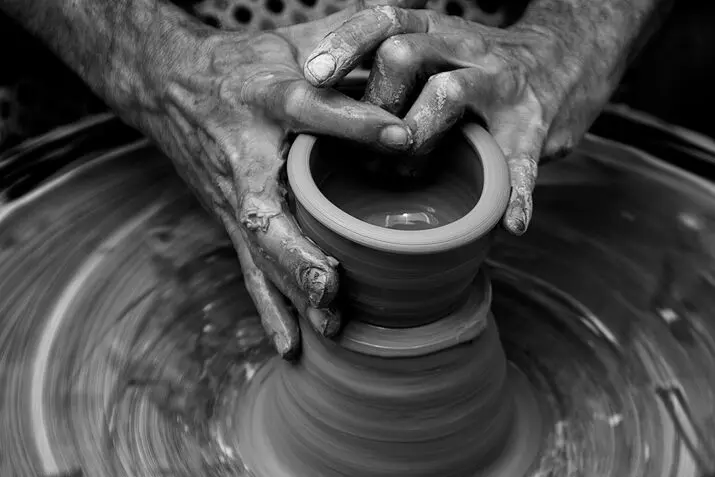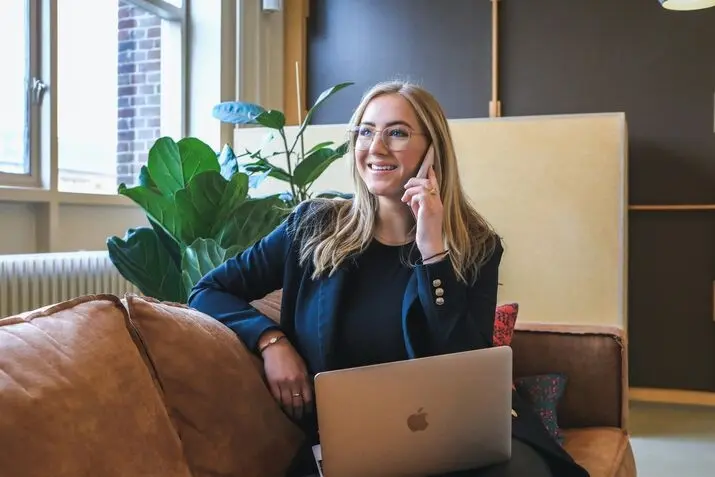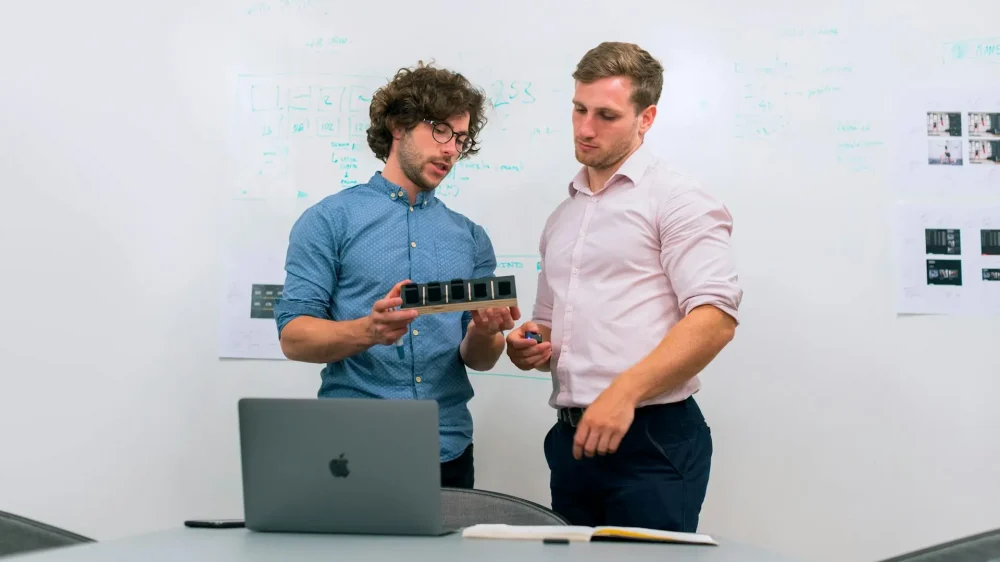Are you curious about a career that blends creativity, problem-solving, and technology, with a significant impact on daily life? A career in product design might be your calling. Product design in 2025 goes far beyond making things look good; it solves real-world problems across digital, physical, and hybrid products. It merges UX, UI, research, and business strategy into one versatile role.
Now is an exceptional time to pursue this career. With AI integration, sustainable design, and an emphasis on user-centric products shaping the future, product designers are more valuable than ever. This post will explore the benefits, essential skills, salary expectations, and how to kickstart your journey in this dynamic field. If you’re considering a career in product design, 2025 is the perfect time to make the leap.
Related Posts:
- MEET THE WOMEN IN TECH POWERING CHARISOL’S SUCCESS
- TOP 10 PRODUCT DESIGN AGENCIES IN NIGERIA
- 5 TOP BENEFITS OF UX RESEARCH FOR BUSINESSES IN 2025
- 5 WAYS FINTECH WEBSITES ARE RESHAPING MODERN BUSINESSES
What Exactly Does a Product Designer Do?
The common misconception is that product design is just about aesthetics. In reality, it’s a multifaceted role:
Core Responsibilities (Day-to-Day in 2025)
- User Research: You’ll understand behaviours, pain points, and motivations through surveys, interviews, usability testing, and tools like Microsoft Clarity.
- Ideation & Concept Development: From brainstorming to wireframes, creating user journey maps and innovative solutions.
- Prototyping & Testing: Building interactive prototypes using Figma, Sketch, Adobe XD, and conducting user tests to iterate on designs.
- UI/UX Design: Creating intuitive, accessible, and visually consistent interfaces with attention to typography, colour, and interactions.
- Collaboration: Working with product managers, engineers, marketers, and stakeholders to align design with business objectives.
- Strategy & Business Alignment: Ensuring your designs solve user problems and meet market goals.
- Problem-Solving Mindset: At its core, product design is about solving complex problems through creative and structured thinking.
Is a Career in Product Design a Good Choice in 2025?
“A career in product design offers high demand, creative freedom, and strong salary growth across sectors. Product design offers stability, creativity, and impact. As Strate.in notes, product design thrives in virtually every industry, from healthcare to fintech to consumer tech, because it addresses essential user needs and market demands.
Different pathways are available, too. Explore Prospects.co.uk to discover roles such as industrial designer, experience designer, UI designer, and interaction designer, highlighting the versatility of a career in product design.
What Jobs Are in Product Design?
Product design isn’t a one-size-fits-all role; it spans various job titles depending on the company, industry, and product focus. Whether you’re interested in physical products, digital interfaces, or strategy, there’s a specialisation for you:
- Industrial & Physical Product Designer: Designs tangible products like electronics, furniture, or tools with a focus on usability and aesthetics.
- UX/UI Designer: Focuses on user experience and interface design for digital platforms, ensuring functionality, accessibility, and user satisfaction.
- Interaction Designer: Specialises in how users interact with digital products, defining workflows, animations, and micro-interactions.
- Product Researcher: Conducts user research, usability testing, and data analysis to inform product decisions.
- Prototyping Specialist: Translates ideas into functional mockups or high-fidelity prototypes for testing and iteration.
- Design Systems Manager: Maintains the visual and interactive consistency of a brand’s design components across products and platforms.
The Compelling Benefits of a Product Design Career
Another reason why a career in product design stands out is its real-world impact on users’ lives. If you’re considering a career in product design, the benefits go far beyond a cool title or trendy workspace. Here’s why thousands are shifting into product design roles in 2025, and why you should consider joining them:
High Demand & Future-Proofing
As technology evolves with the rise of AI, AR/VR, and IoT, product designers are in higher demand than ever. Every business, whether digital or physical, needs someone who can craft a seamless, user-first experience. That makes this career remarkably future-proof, regardless of where technology goes next.
Making a Real Impact
Whether you’re crafting a mobile banking interface or simplifying a hospital check-in system, your design decisions impact real people every day. Product designers shape how we work, play, communicate, and solve problems.
Creativity & Innovation
Forget the myth that design is all about aesthetics; product design lets you combine creativity with logic, strategy, and innovation. You’ll face new challenges daily, applying your imagination to practical, user-centred solutions.
Diverse & Transferable Skillset
Throughout your product design journey, you’ll gain both hard and soft skills:
- Design thinking
- UX research
- Prototyping
- Empathy & user advocacy
- Collaboration & stakeholder communication
These competencies are valuable across various industries, including technology, finance, healthcare, and education.
Continuous Learning
Design is an ever-evolving field. In 2025, product designers are learning to utilise AI-assisted tools, build within design systems, and master frameworks such as Jobs To Be Done. Keeping up with tools like Figma plugins, UXPin, or AI-powered research platforms keeps the work exciting and current.
A Vibrant Global Community
From Slack groups to LinkedIn’s UX communities, product designers stay connected through a supportive ecosystem. As discussed in Charisol’s blog on 15 UX Design Habits for Better Product Teams, staying active in design communities can help you grow faster, gain feedback, and feel motivated.
High Job Satisfaction
Most product designers love what they do. Why? Because it’s that rare combo of creativity, impact, problem-solving, and career mobility. Whether you’re building for startups or scaling design systems in big tech, the work remains meaningful.

Essential Skills for Aspiring Product Designers
Hard Skills
- UX/UI Principles: Master wireframes, user flows, and visual hierarchy.
- Design Software: Proficient with Figma, Sketch, Adobe XD, Miro.
- Research & Analysis: Interviews, surveys, heatmaps.
- Prototyping: Crafting interactive demos.
- Design Systems: Working within scalable systems.
- Responsive Design: Across devices and platforms.
- Accessibility: Knowledge of WCAG standards.
- AI Tools: Using tools that generate layouts or content suggestions (e.g., Copilot, GPT-based plugins).
What Skills Do Product Designers Have?
As CareerFoundry highlights, skills range from technical expertise to business acumen.
Soft Skills
- Empathy: Understand and advocate for users.
- Problem-Solving:
- Communication: Present complex concepts simply.
- Collaboration: Work across diverse teams.
- Adaptability: Embrace change and uncertainty.
- Storytelling: Sell your design decisions and vision.
Product Designer Salaries: What to Expect in 2025
If you’re comparing tech roles, a career in product design often commands a competitive salary. Salary varies significantly depending on role, location, and experience:
- Junior Designer:
- USA: $70k–$95k
- Mid-Level Designer:
- USA: $95k–$130k
- Senior/Lead Designer:
Salaries vary based on experience, specialisation (e.g., UX researcher, design systems expert), location, company size, and industry.
Top Industries & Locations
Whether you’re in fintech or e-commerce, a career in product design is relevant across industries. Highest salaries are found in sectors like:
- Tech (SaaS, Fintech)
- Healthcare
- Finance
Big cities and remote-first roles in hubs like San Francisco, New York, and London pay the most.
How to Increase Your Salary
- Gain experience in specialised areas (e.g., research, systems)
- Lead teams or mentor junior designers
- Build a strong portfolio with real results.
- Develop negotiation and presentation skills.
Which Degree Is Best for Product Design?
There isn’t a one-size degree. Whether it’s Industrial Design, Human-Computer Interaction (HCI), Graphic Design, or Computer Science, your skills, portfolio, and mindset matter most. For example, IIAD recommends a blend of design and technical knowledge paired with practical projects.
Can I Learn Product Design on My Own?
Yes, with structure. Online courses from CareerFoundry, Product School, and Coursera offer guided paths. CareerFoundry emphasises that structured learning, paired with mentors and real projects, delivers the best outcomes.

How to Start a Career in Product Design
Starting a career in product design today is more accessible than ever, thanks to a blend of traditional education, online learning, and hands-on practice. Whether you’re a recent graduate, a tech-savvy creative, or someone transitioning from another field, this step-by-step path will guide your entry into the industry. As you advance in your career in product design, you can move from junior roles to leadership positions like Design Lead or Head of Product.”
Education: Choose a Degree or Bootcamp
While many product designers hold degrees in Human-Computer Interaction (HCI), UX Design, Industrial Design, or Graphic Design, a traditional degree is no longer the only route. Specialised bootcamps and short courses now offer hands-on, accelerated learning.
- Product School offers practical advice on breaking into the field, even without prior design experience.
- IIAD India outlines the best degrees for product design in India and globally.
Build a Case Study-Driven Portfolio
Your portfolio should showcase not just final outcomes, but your design thinking process. Include user research, wireframes, prototypes, and UX rationale.
- Include at least 3–5 case studies.
- Tools like UXfolio and Notion can help you structure compelling UX case studies.
Master Tools of the Trade
Become proficient in industry-standard design software:
- Figma (dominates in 2025)
- Adobe XD
- Sketch (still used in some teams)
- Whiteboarding & brainstorming with Miro
These tools enable wireframing, prototyping, and collaboration in product teams.
Networking: Connect with the Community
Join online design communities and attend virtual or local events. Follow leading voices like Don Norman or Julie Zhuo on LinkedIn.
Popular platforms for networking and learning include:
Internships & Junior Roles
Hands-on experience accelerates your learning. Look for internships or junior roles titled:
- UX Product Designer
- Interaction Designer
- Product Design Intern
- Junior UI/UX Designer
Startups often offer learning-rich environments and greater creative freedom.
Continuous Learning: Stay Updated
With tools like Webflow and CareerFoundry, you can learn product design on your own, with support and expert guidance. These platforms offer guided projects, mentorship, and certifications.
Also, stay tuned to trends in:
- AI-assisted design
- Accessibility standards (e.g., WCAG)
- Design systems and tokens
- Sustainability in digital design
Job Market Navigation
When job hunting, expand your search with various role titles such as:
- UX Product Designer
- Product Designer (Mid-Level)
- Service Designer
- UX Researcher
- UI Designer
You can find listings on platforms like AngelList, Wellfound, and Remote OK.
FAQ: Can I Learn Product Design on My Own?
Yes! As CareerFoundry explains, you can learn product design independently through structured courses, expert feedback, and self-led projects.
What is ‘Jobs to Be Done’ in Product Design?
The Jobs-to-Be-Done (JTBD) framework focuses on functional, emotional, and social user needs. ProductPlan defines it as “the progress a user wants to make in a given situation.” This method helps you design features that solve real user challenges.
Do Product Designers Get Paid a Lot?
Yes, on average, a US product designer earns around $110k/year according to Indeed. Many senior roles exceed $150–180k, adding bonuses and equity.
Do Companies Hire Product Designers?
Absolutely. From startups to Fortune 500 firms, hiring demand remains strong. Musemind Agency explains that companies hire designers to improve UX, stay ahead of trends, and create consumer-driven roadmaps.
Is Product Designing a Good Career in India?
Absolutely, a career in product design in India is experiencing a major boom. As Strate.in reports, increasing investments across sectors like e-commerce, health tech, and fintech are driving strong demand. Budgets are rising, roles are diversifying, and product design is becoming a key competitive advantage for Indian companies.
Recent analysis from LinkedIn data shows a year-over-year growth in design job postings of over 30%, particularly in Bangalore, Mumbai, and Delhi’s startup hubs. Additionally, a report by Glassdoor India indicates average salaries for Indian product designers range from ₹6 LPA for junior roles to upwards of ₹25 LPA for senior positions.
In summary, a product design career in India now offers both stability and rapid growth, driven by rising budgets, expanding sectors, and strong talent demand.
Quick Tips for Staying Inspired in Product Design
- Build moodboards from sites like Dribbble and Awwwards.
- Follow design blogs like Product School.
- Participate in design challenges and hackathons to keep your skills sharp.
- Join mentorship programs and attend networking events for fresh ideas and support.

Conclusion:
A career in product design blends creativity, impact, and opportunity. With high salaries, continuous growth, and a vibrant community, it’s one of the most rewarding tech careers in 2025. If you’re ready to shape everyday products and innovate for users, this role may be your next big step.
Are you ready to launch your career in product design? Share your thoughts or questions in the comments below!

